A Fair Deal: The Long-standing Partnership With The Great New York State Fair
Learn more about our partnership with the Great New York State Fair (video and transcripts).
By Lauren Cahoon Roberts
For 13 days at the end of August, over a million people from every county in New York and beyond travel to the fairgrounds in Syracuse, New York, for the Great New York State Fair (NYS Fair). Some are there for music, rides and deep-fried-everything; others come to show and see the best examples of livestock and large animals the state has to offer. With over 10,000 animals coming to the fairgrounds during the event — everything from pigeons to pigs — on-call veterinary care is mandatory. And, for over half a century, the Cornell University College of Veterinary Medicine (CVM) has answered those calls.
“The mission of the fair is — number one — we take care of the animals,” says Mary Ellen Chesbro, New York State Fair coordinator and agricultural manager. Breeders, farmers and enthusiasts from around New York come to the fair knowing that their animals are in the best of care thanks to efforts from CVM veterinarians and students. “We have a very good symbiotic relationship,” says Chesbro. “We’re very pleased to have Cornell veterinarians here.”
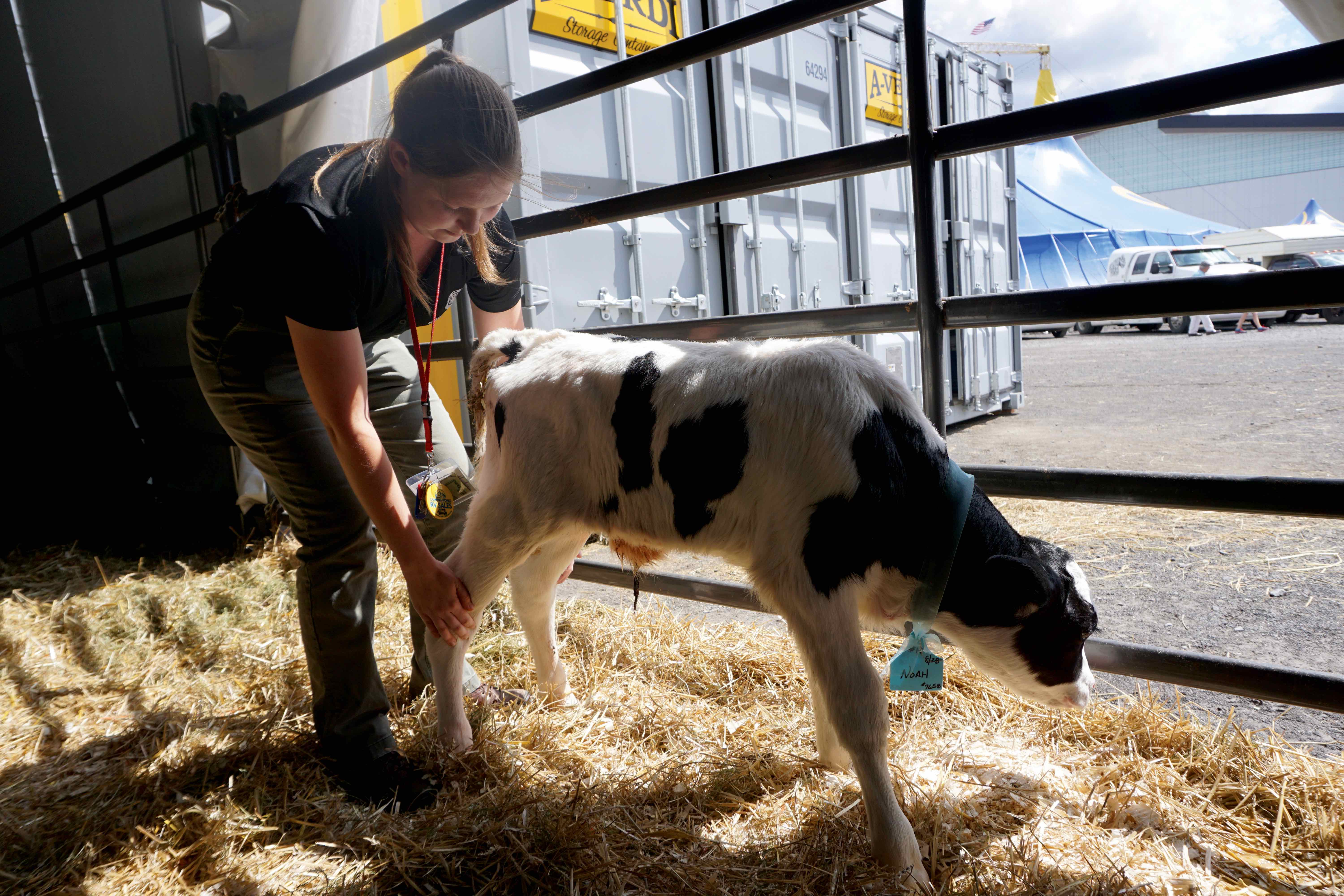
On Call
Ensuring the animals’ safety and comfort is a well organized process at this point in the fair’s tenure. All incoming animals are first checked by New York veterinarians for all necessary immunizations. After admission, the animals then fall under the care of Cornell experts. A designated equine veterinarian is also available to show horses that may have more complicated issues. On each of the 13 days of the fair, Cornell veterinarians make their rounds through the livestock barns to check on animals, and they take plenty of time to chat with the exhibitors and guests.
“There’s definitely an educational aspect to what they do,” says Chesbro. “They educate the exhibitors on animal husbandry, and explain what they’re doing and why they do it to any fairgoers who are curious.”
Dr. Rachelle Thompson is a CVM second-year large animal resident. She and her fellow large animal residents, along with others from the ambulatory and occasionally theriogenology services, carry the banner of veterinary duty for this year’s event.
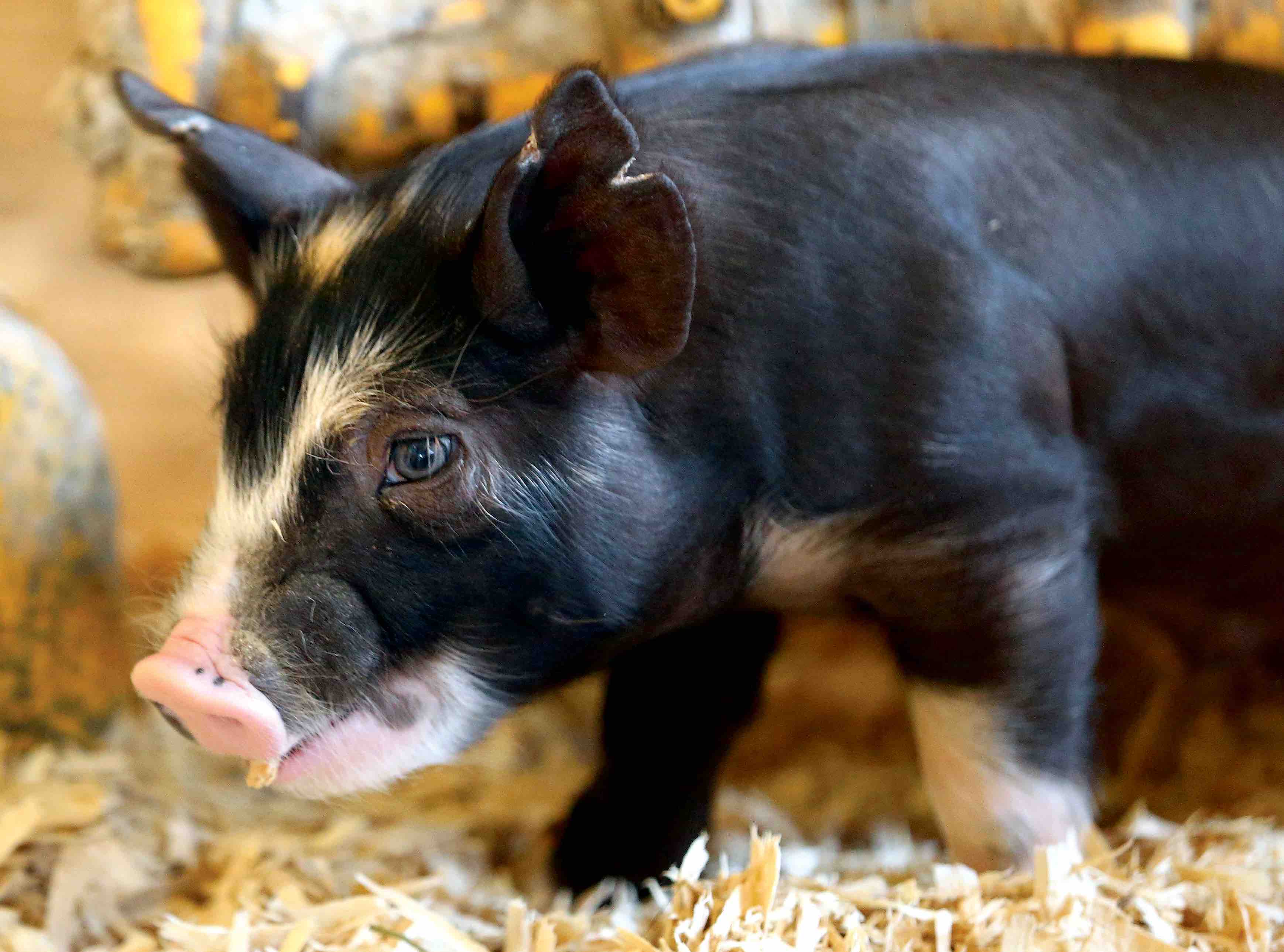
Each resident spends three days on-site, staying in an air-conditioned RV when they’re not treating animals. They patrol the grounds in a zippy golf cart with a doctor’s kit of supplies in the back.
For Thompson, who had been out of the hospital preparing for boards, getting back to ambulatory work was a shift. “It’s a big change of pace,” Thompson says of the job. “But it’s good. Obviously, I’m a vet, this is what I like to be doing. It’s nice to have this, to be able to come here and do some veterinary work.”
The work done at the fair can be a kind of refresher on the skills these residents learned back in their first years of veterinary school. “In the hospital I’m used to having full bloodwork, and my ultrasound machine whenever I want to diagnose something, so it’s a big change to be back on the road again,” says Thompson. “You take it back to the basics that you were taught in vet school, so it’s all based on the physical exam of the animal, and it kind of takes away the fancy tools you have at the hospital and rely on what you see.”
“You take it back to the basics that you were taught in vet school, so it’s all based on the physical exam of the animal, and it kind of takes away the fancy tools you have at the hospital and rely on what you see.”
Thompson put those skills to use when she received a call on the veterinary emergency line from an owner in the swine pavilion — a show pig had run up a fever, and they wanted to administer antibiotics. She hopped into the golf cart to fetch the drugs from the ambulatory van and drove quickly to the swine pavilion to give the sow a full physical examination. After taking its temperature and listening carefully to the pig’s lungs and heart, Thompson agreed — the pig was feverish. The most likely cause was shipping fever, or pneumonia, that can often happen when animals make long journeys. After conferring with the owner some more, Thompson administered the antibiotics. While the pig made it known to everyone within hearing distance she was not a fan of the injection, the dose ensured she made a full recovery.
Bats and Tigers and Bears, Oh My!
This clinical partnership started with CVM legend Frances Fox, D.V.M. ’45. In the early 1950s, Fox was asked by Dr. John Stack, a Syracuse veterinarian, to take his place in tending to the veterinary needs of the fair’s animals. For 25 years, Fox, with help from veterinary students, did the 24/7 on-call work himself, sleeping on a desk every night in the designated veterinary office in the dairy barn.
Robert Hillman, D.V.M. ’55, took over the job from Fox in the 1970s, running the operation for 24 years and upgrading the napping station from the desk to a cot.
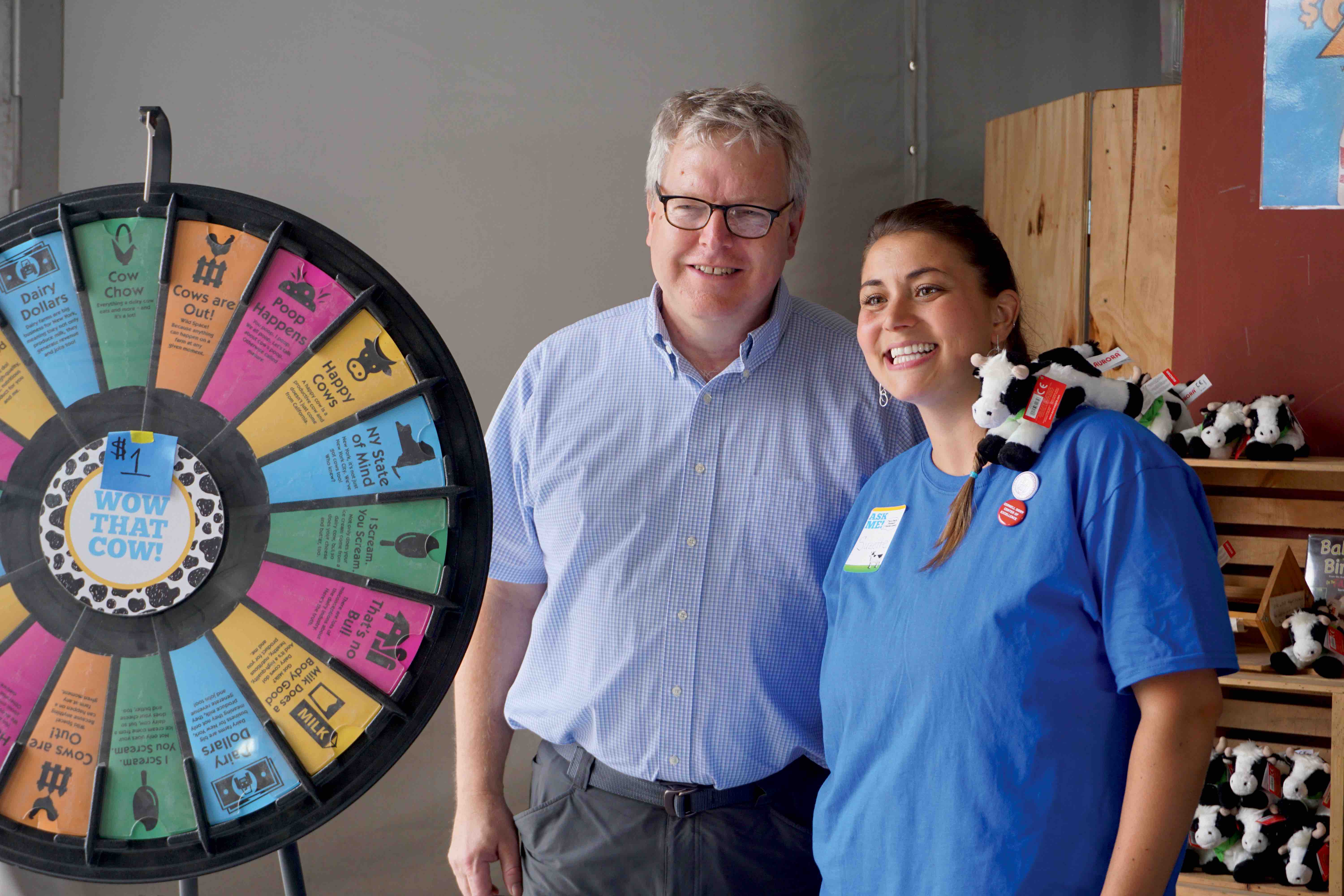
Hillman recalls his most unusual case at the fair — a white tiger from the circus act with a foot abscess. As an ambulatory veterinarian, Hillman did not see big cats as part of his usual caseload. Fortunately, Hillman had a quick resource to call on — his colleague Dr. George Kollias, the Jay Hyman Professor Emeritus of Wildlife Medicine. “I called down to the school and asked him what the best way to anesthetize it was. He told me to use several drugs which I’d never heard of before, then asked if I wanted him to come up to do it — I said, ‘You bet I do.’ ”
Then there were the bears with diarrhea — a case he treated “very carefully.” But large carnivores were merely one example of the wide variety of creatures CVM veterinarians have had the chance to treat during the years of staffing the NYS Fair animal barns. “You get to see a great variety of animals,” says Hillman. “And these are really well-trained, well-behaved animals, too, which makes it a positive experience for students to handle and treat them.”
“I really enjoy volunteering. It’s fun to be here. I love that it’s also affiliated with the College of Veterinary Medicine.”
While the training and experience was rich, Hillman admits his least favorite aspect of the work was the non-stop nature of it all. “For 10 days, we were there for 24 hours each day,” he says. “We had to shower in the dairy barn. There were no cellphones in those days, so we really had to stay right there.”
For many in the CVM community, fair duty is a shared rite of passage. Even Lorin D. Warnick, D.V.M., Ph.D. ’94, the Austin O. Hooey Dean of Veterinary Medicine, has his own stories to tell — including fielding a panicked request to come capture bats in the 4-H dormitory, or witnessing the time when a team of show draft horses startled, broke loose from their carriage and galloped through the crowd.
Despite these more dramatic moments, Warnick enjoyed his time on call at the fair, noting that it brought back fond childhood and family memories of showing their dairy cattle at the state fair in Montana. “When I visit the fair now, I especially enjoy seeing the kids with their animals for 4-H,” says Warnick.
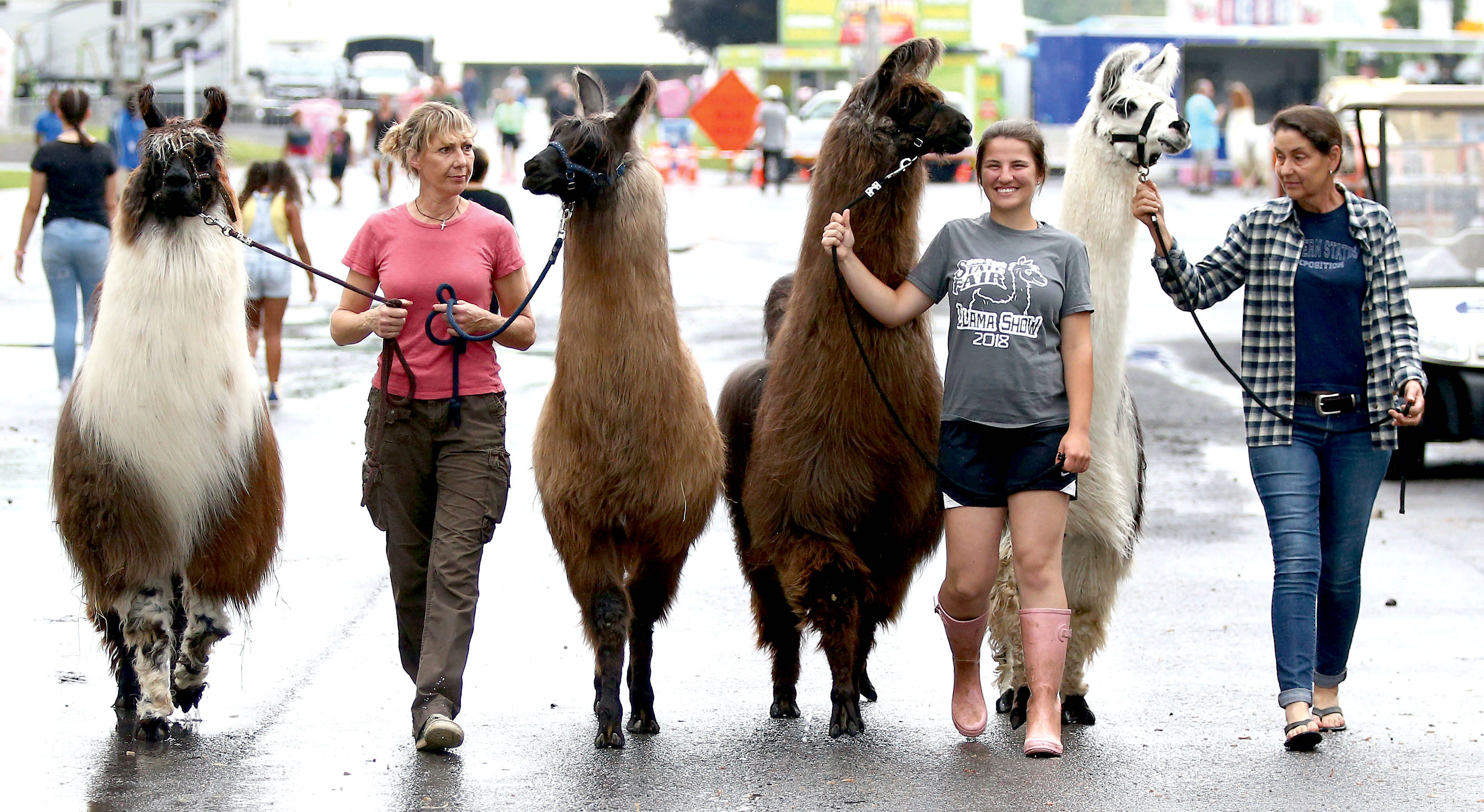
Birthing Barns and Halls of Health
The college has had a non-clinical role at the fair for even longer than its longstanding clinical partnership. As early as 1916, the college had exhibits on veterinary medicine, complete with anatomical illustrations and medical instruments.
Beginning in the late 1940s, the college began partnering with the New York State Veterinary Medical Society on these exhibits. In the 1960s, Dr. H. Hugh Dukes, the college’s noted professor of physiology, held live physiology demonstrations that became increasingly popular with fairgoers. In coordination with CVM, this led the New York State Veterinary Medical Society to begin giving live surgery demonstrations.
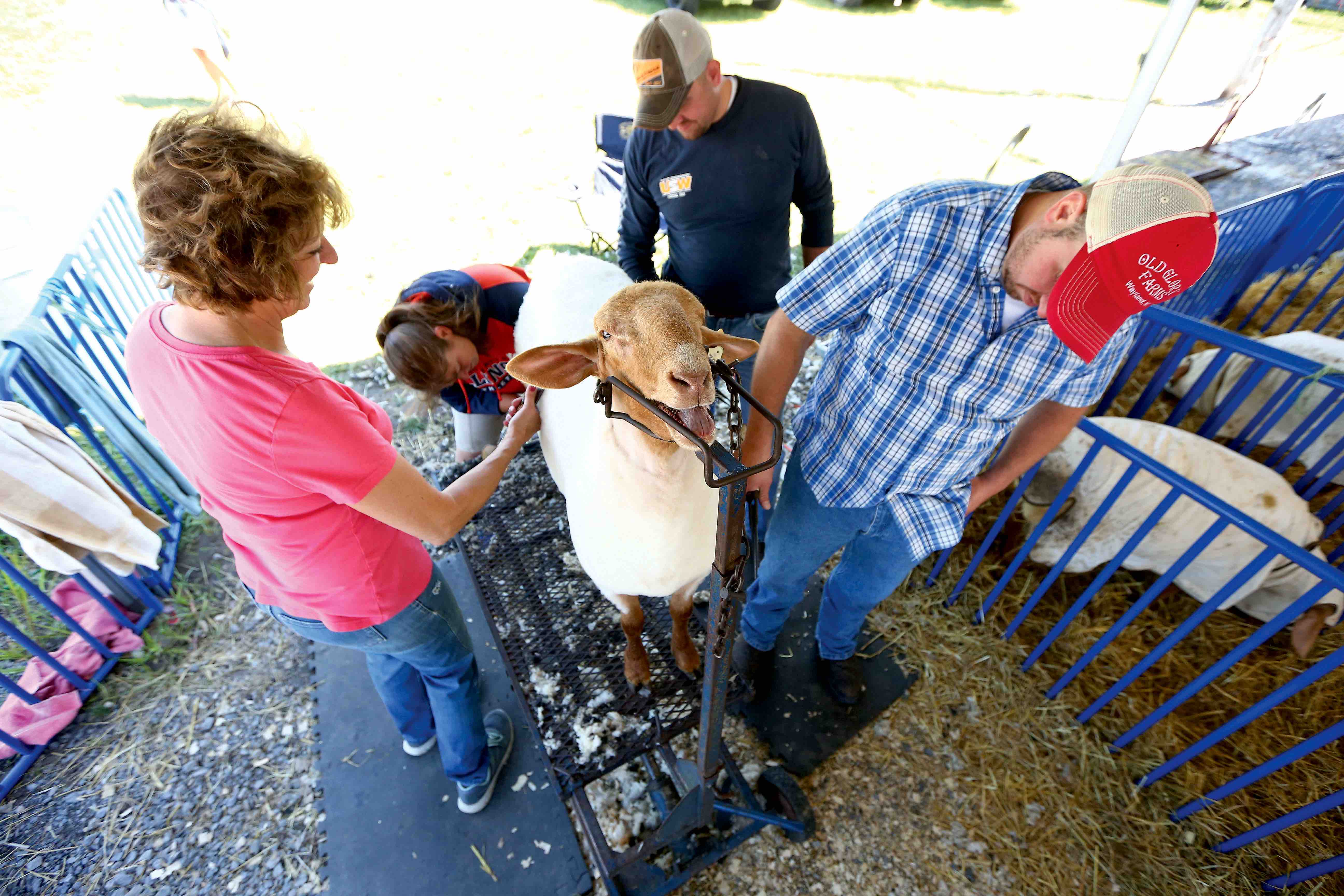
Cornell’s involvement continued as the years went by, with CVM students, veterinarians and alumni all helping at the Hall of Veterinary Health, which, much like it did in 1916, features educational displays, demonstrations and talks on veterinary medicine. A more recent collaboration with Cornell takes places at the Dairy Cow Birthing Center, established in 2014. The exhibit, organized by the New York Animal Agriculture Coalition, features live births of dairy cows.
Fourth-year biomedical and biological sciences graduate student Casey Cazer, D.V.M. ’16, worked as both a veterinary student volunteer and later as a supervising veterinarian at the Dairy Cow Birthing Center. During her years helping at the center she did just about everything — taking questions from the public, presenting information to the audience during births, monitoring and assisting with the births, caring for calves, managing other student volunteers and running social media accounts for the exhibit.
“I really enjoyed talking to fair-goers, particularly those who have never interacted with cows and aren’t familiar with the dairy industry.”
“I hoped to contribute to the exhibit and demonstrate to the public how much dairy farmers care for their cows and the environment,” says Cazer. “I really enjoyed talking to fair-goers, particularly those who have never interacted with cows and aren’t familiar with the dairy industry. I discovered a greater breadth of opinions on dairy farming and animal welfare by talking to the general public about farming and milk production.”
Veterinarians aren’t the only members of the CVM community that help out at the fair. Suzette Moschetti, academic support coordinator at CVM, has now done two years of volunteering at the Dairy Cow Birthing Center. The first year she helped sell Cornell ice cream from an ice cream truck. This year, she staffed a booth at the Dairy Cow Birthing Center, where she sold memorabilia, fielded visitor questions and helped notify people when one of the expecting cows was about to give birth. “I really enjoy volunteering. It’s fun to be here,” says Moschetti. “I love that it’s also affiliated with the College of Veterinary Medicine.”
The Fair's Future
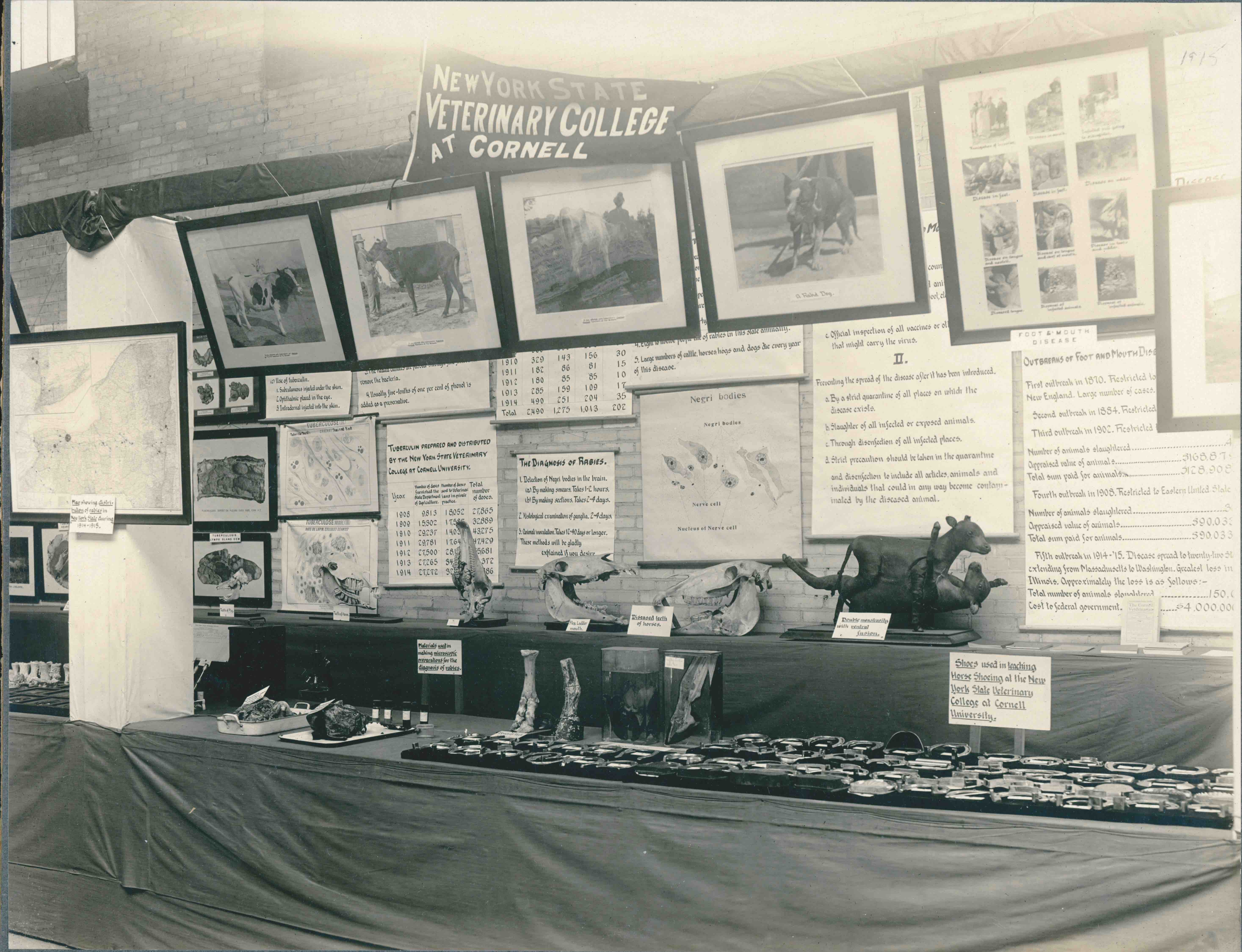
Helping at the fair is certainly a different experience compared to the days when Fox and Hillman spent their nights in the dairy barn. Thompson and her colleagues may have less grueling on-call schedules and an air-conditioned RV and cell phones at their disposal, but one central aspect has stayed constant — the mission of providing excellent, round-the-clock care for New York's animals.
“Our long-standing relationship with the New York State Fair continues to yield rich benefits,” says Warnick. “Our students, residents and other community members gain rewarding experience working with people and animals from all over the state, and those animals are able to receive our veterinarians’ expert care and knowledge. It’s a rewarding, win-win partnership.”


